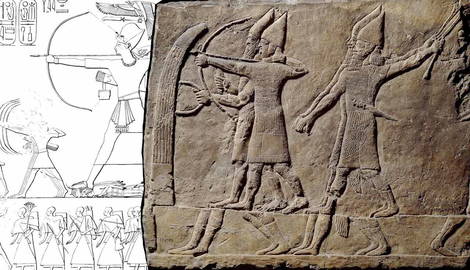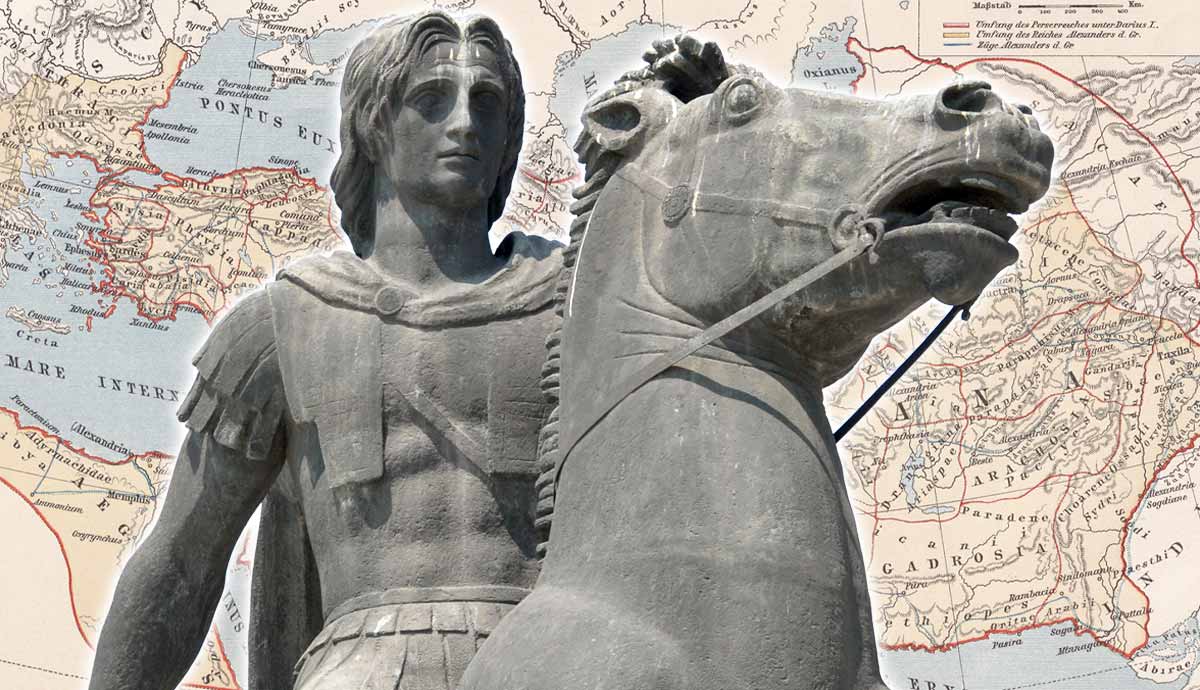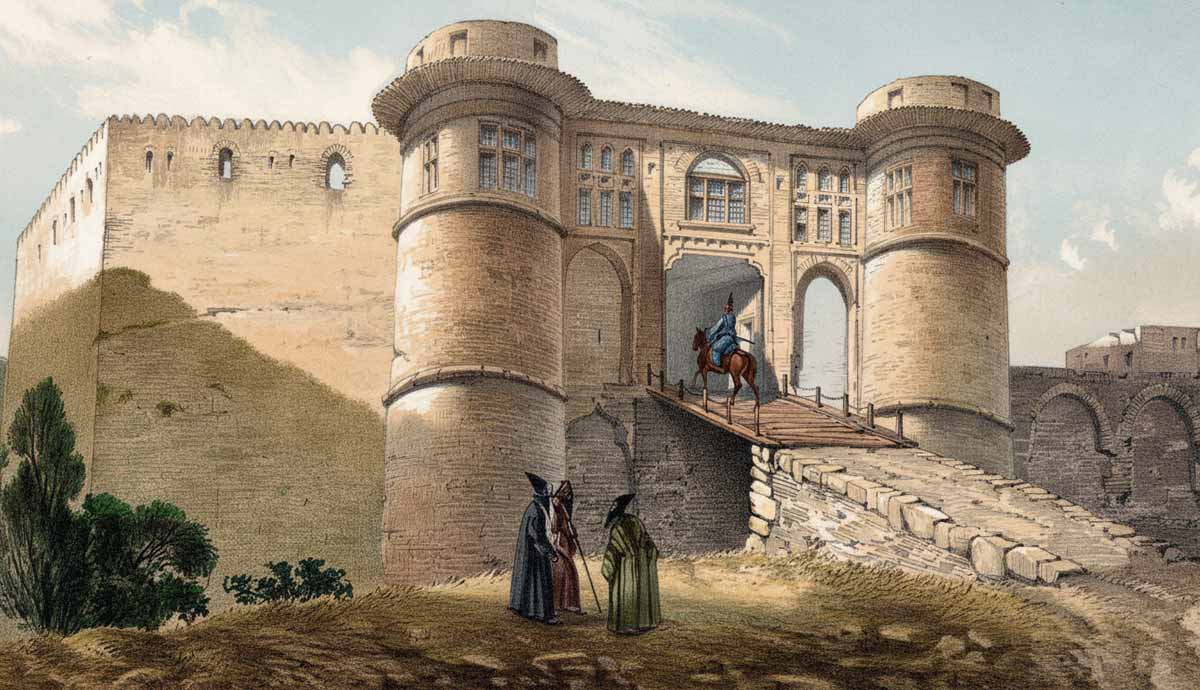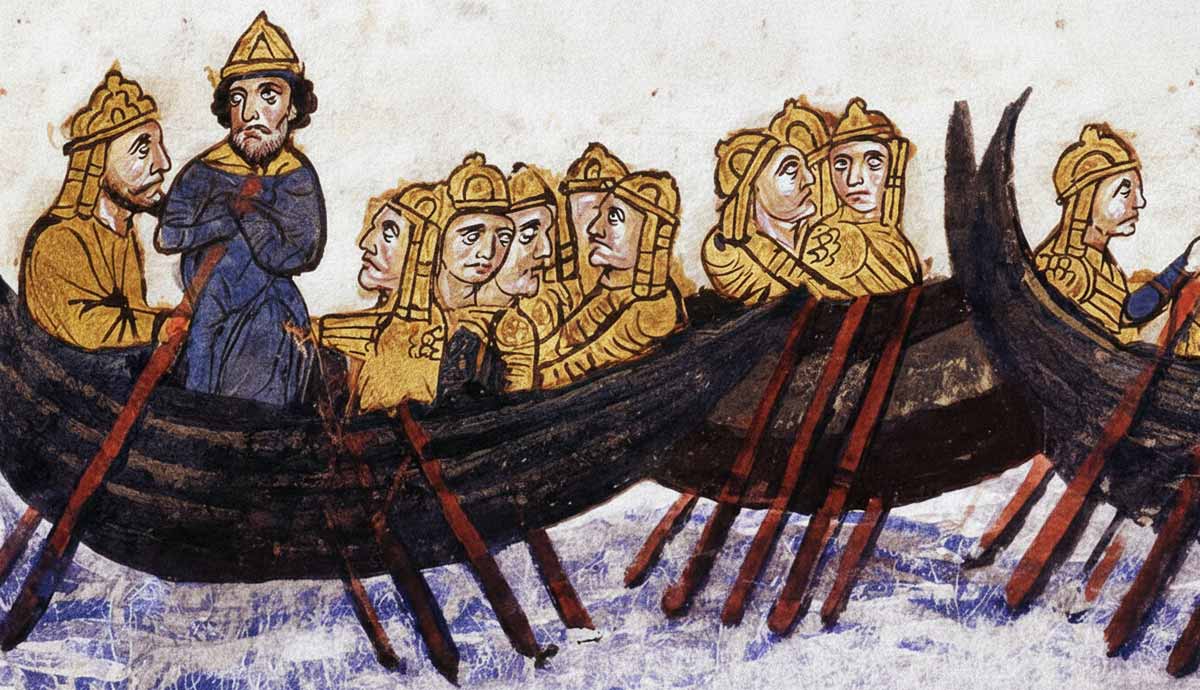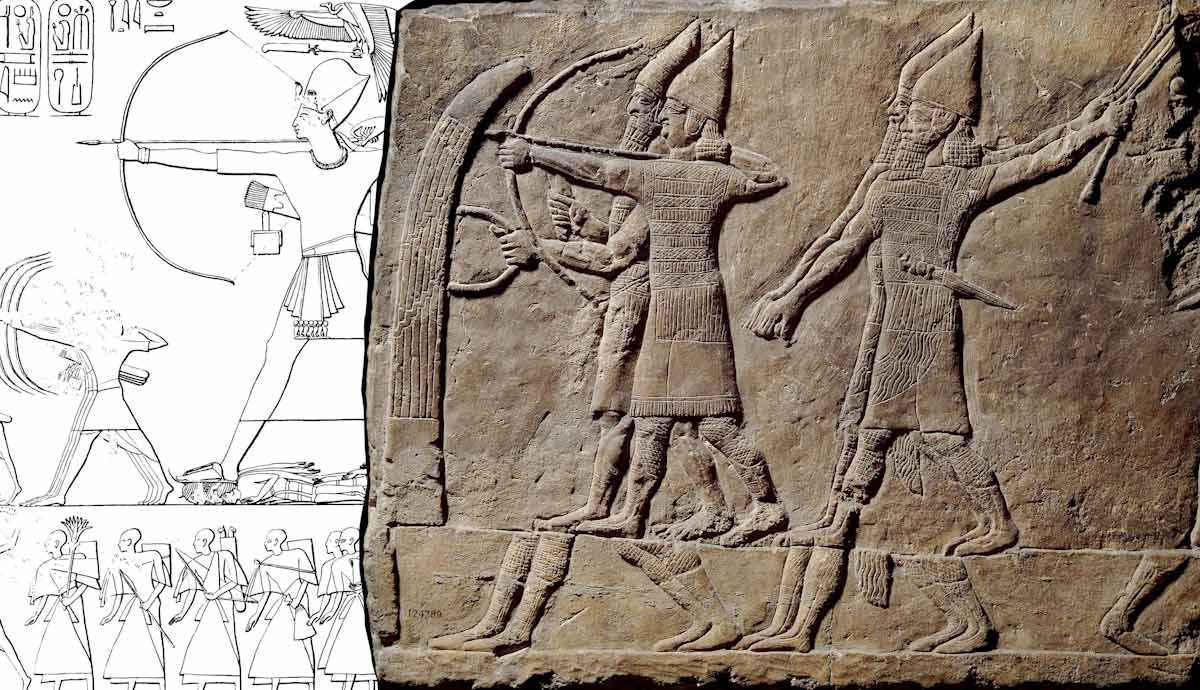
In the late 13th century and early 12th centuries BCE, the kingdoms and city-states of the eastern Mediterranean basin were devastated by a series of attacks. The people leading the attacks were a collection of disparate tribes who sometimes aligned while at other times worked alone. These tribes became collectively known as the “Sea Peoples” based on Egyptian texts that referred to them as the “people beyond the sea.” Modern scholars of the Bronze Age have since referred to these people collectively as the Sea Peoples, but they remain enigmatic in many ways. The origins of these tribes, where they migrated to after the Bronze system collapsed, and perhaps most importantly, the role they played in that collapse, are all subjects of scholarly debate.
Before the Sea Peoples: The Late Bronze Age System

During the Late Bronze Age (c. 1550-1200 BCE) a geopolitical system formed in the eastern Mediterranean and the Near East known by modern scholars as the “Great Powers Club.” The most constant members of the club were Egypt, Hatti, Kassite Babylon, and Alyshia (Cyprus). Mitanni was an early member that was replaced by Assyria and Arzawa may also have been a member. The Great Powers arranged diplomatic marriages, trade agreements, and military alliances with each other. The smaller Canaanite city-states of the Levant/Syria-Palestine were subordinate members and sometimes fought over as proxies, especially between the Egyptians and Hittites, but major conflicts were, for the most part, avoided.

The correspondence between the Great Powers was documented in a collection of Akkadian-cuneiform tablets known as the Amarna Letters. The letters detail how the kings of the major kingdoms referred to each other as equals, while the Canaanite kings were treated as inferiors. The documents also demonstrate how the borders were more-or-less open from Egypt to Persia and from the Black Sea to the Red Sea for trade. The Kingdom of Elam and the Mycenaeans were also involved in this system, although they are not mentioned in the Amarna Letters. This system brought peace, stability, and prosperity to millions of people, but it quickly collapsed in the late thirteenth century.
Who Were the Sea Peoples?

Before examining the reasons for the collapse of the Bronze Age system, it is important to identify the people who played a major role in it: the Sea Peoples. The Sea Peoples unsuccessfully attempted to invade Egypt twice, once during the fifth year of King Merneptah (ruled c. 1224-1204 BCE) and once in Ramesses III’s (ruled 1184-1153 BCE) eighth year. According to the “Stela of Merneptah,” at least five Sea Peoples tribes invaded Egypt along with their Libyan allies.
“The wretched, fallen chief of Libya, Meryey, son of Ded, has fallen upon the country of Tehenu with his bowmen . . . Sherden, Shekelesh, Ekwesh, Luka, Teresh, taking the best of every warrior and every man of war of his country.”
The text further lists a casualty count of 6,000 Libyans and 1,000 Sea Peoples. This text not only names five Sea Peoples tribes but also indicates that they were politically sophisticated enough to form confederations. It is believed that these tribes sailed across the Mediterranean from Europe directly to Libya, where they formed an alliance with the Tehenu (Libyans). Some scholars have noted that this attempted invasion took place around the same time as the destruction of Troy. Scholars have also pointed out the similarity of the name Ekwesh with Achaean, suggesting that this tribe was comprised of marauding Mycenaeans/Achaeans.

The textual evidence of the attempted Sea Peoples invasion during Ramesses III’s rule come from the second pylon of the Medinet Habu Temple. As with the first invasion, a coalition of Sea Peoples tribes are mentioned as being allied with the Libyans. Part of the text reads:
“They came with fire prepared before them, forward to Egypt. Their main support was Peleset, Thekel, Shekelesh, Denyen, and Weshesh, [these] lands were united, and they laid their hands upon the land as far as the Circle of the Earth. Their hearts confident, full of their plans.”
With the exception of the Shekelesh, these were all newly named tribes that attacked Egypt. The second pylon of Medinet Habu is also important because pictorial reliefs accompanied the text. The reliefs show families and livestock moving with the Sea Peoples’ armies, indicating that migration was part of the invasion.
When the Sea Peoples invasions finally ended, the Mediterranean and Near East had drastically changed. The Medinet Habu text states that Sea Peoples destroyed the Hittite’s kingdom as well as the Levantine cities of Kode, Carchemish, Arvad, and Alasa. Additionally, the Sea Peoples ravaged Cyprus, destroyed Ugarit, and sacked many Mycenaean cities. The Sea Peoples were clearly the weapon that destroyed the Bronze Age system, but many scholars believe they were only one factor in a much larger process.
The Bronze Age Collapse & The Sea Peoples

If the Sea Peoples were only part of the picture in the collapse of the Late Bronze system, what were some other potential factors that contributed to it? Many scholars have looked for environmental factors to explain how a domino effect began that pushed tribe after tribe from Europe into the Near East. Some have argued that a series of powerful earthquakes started the process, but others do not agree. Those opposed to the earthquake hypothesis point out that a lack of technology would have mitigated the impact of earthquakes, such as widespread fires.
This is not to say that earthquakes had no impact on the collapse, just that their effect was minimal. Drought, of which there is some textual evidence, was another environmental factor that probably played an even bigger role in the collapse. Herodotus (I, 94) wrote that during the reign of the Bronze Age Lydian King Atys, there was a severe drought in Anatolia. The previously mentioned text from Merenptah’s rule also mentions how he took “grain in ships, to keep live that land of Kheta.” Kheta, here being an Egyptian form of the name of the Hittite’s kingdom.

The drought may have caused the Sea Peoples tribes to begin migrating in search of more fertile lands, while a population explosion in the Aegean may have exacerbated the situation. For example, studies show that the region of Messenia reached a peak of 50,000 people in the late thirteenth century. When combined with the drought conditions, the lack of land led many young Mycenaean men to try their luck as warriors and marauders. Some of these young men turned their weapons on fellow Mycenaeans while others traveled east and south.
As drought and overpopulation began to spread throughout the Aegean and the Sea Peoples started their attacks, other people also started migrating. The Arameans, Hebrews, and Chaldeans emerged from the deserts of the Near East at this time and the Indo-European Phrygians swooped down from Europe into Anatolia. The Hittites and their capital city of Hattusa took the brunt of these early attacks. Although the Hittites were a well-organized, martial society, they could not withstand the combined Phrygian and Sea Peoples attacks, and as mentioned earlier, eventually fell. Once Hattusa and the Hittites fell, the Sea Peoples had an open and relatively easy march through the Levant to Egypt.
What Happened to the Sea Peoples?

The most immediate aftermath of the Sea Peoples invasions was the destruction of the Hittite Empire and the erasure of the city-state of Ugarit. The greatest beneficiary of this geopolitical shift was Assyria, which became the premier Near Eastern power for the first half of the first millennium BCE. But what happened to the Sea Peoples tribes? A combination of Egyptian texts, archaeology, and philology can help answer this question partially.
It is important to remember that the Sea Peoples were several different tribes and the names the Egyptians gave them were apparently demonyms, or became demonyms. The possible Ekwesh-Achaean-Mycenaean connection has already been discussed, but philological-linguistic connections can also be drawn from many more of the tribes. The Teresh are often believed to be associated with Tuscany and the Etruscans. It is unknown if that was their origin or if they settled there and gave their name to the region. It should also be pointed out that in Virgil’s Aeneid the Trojans fled the destruction of their city to settle in Rome. Many modern scholars also believe that the Tjecker and Sekelesh originated in Sicily and then settled in the Levant.

The Luka and Danuna probably originated in Anatolia, with the Luka’s homeland being Lycia. The Danuana were possibly related to the land of Danuna mentioned in Hittite texts, which is the Adana region of Cilicia. One theory is that the Danuna settled in the Levant and joined or became the biblical tribe of Dan.
Of all the Sea Peoples, the Weshesh and the Sherden/Shardana had the most impact in Egypt. The geographic origins of the Weshesh are a mystery, but the “Papyrus Harris,” which was written during the rule of Ramesses III, mentions that they were settled as captives in Egypt. More is known about the Sherden, who served as mercenaries under Ramesses II (ruled c. 1290-1224 BCE) at the Battle of Kadesh (c. 1285 BCE). It is likely that some Sherden warriors volunteered their skills to the Egyptians, while others decided to fight against them. Some members of the Sherden, like the Weshesh, were also forcibly settled in the Egyptian Delta. The name “Shardana” is believed to refer to their homeland of Sardinia, or perhaps that is where some settled after the Bronze Age collapse.

The Peleset are perhaps the most interesting of the Sea Peoples. The Peleset possibly originated in Cilicia before invading the Levant, where they settled and became the biblical Philistines. The Philistines were later defeated by the Israelites, but their legacy is still seen today. The Philistines played an important role in the formation of the Kingdom of Israel and the modern term “Palestine” is likely derived from their name.
